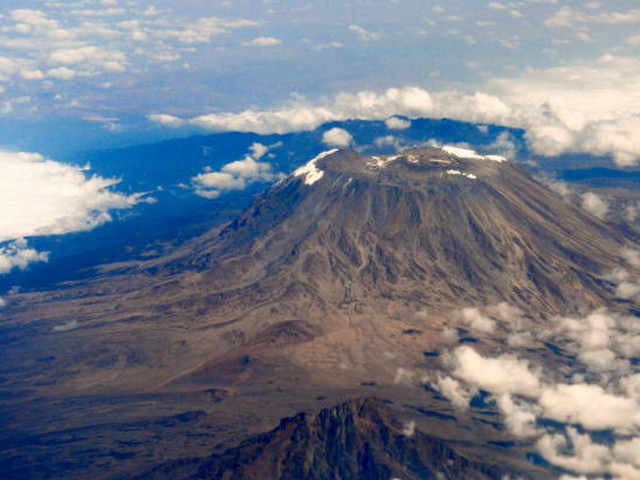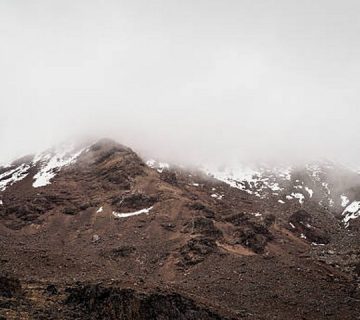Embark on an Unforgettable Journey: Kilimanjaro Climb for Beginners
Mount Kilimanjaro, crowned by an eternal snowcap, is located in the heart of Tanzania. Towering at a majestic height of 5,895 meters (19,341 feet), it is not only Africa’s highest peak but also the tallest free-standing mountain in the world. A climb to its summit is a beacon of personal achievement and a transformative experience that attracts adventurers, dreamers, and nature lovers alike. Here at the Kilimanjaro Centre for Trekking and Ecotourism (KCTE), we specialize in guiding you through this monumental African adventure. Whether you’re a seasoned hiker or a determined newcomer, this post is your stepping stone to conquering "the roof of Africa." Let’s begin your journey to the summit with essential insights and tips tailored for beginners.
Why Climb Kilimanjaro?
Climbing Kilimanjaro is about more than just reaching the top; it’s about witnessing the world from an awe-inspiring perspective and understanding the pulse of the Earth beneath your feet. The journey through its diverse ecosystems—from lush rainforests to alpine deserts and finally the icy Arctic summit—offers a unique backdrop where each step introduces a different facet of nature’s grandeur.
Choosing the Right Route: A Beginner’s Guide
Marangu Route: The "Coca-Cola" Route
Ideal for beginners, the Marangu route is the only path offering hut accommodations, providing comfort as you ascend. Known for its gradual slopes and straightforward path, it allows climbers to acclimate gradually, making it a popular choice for those new to high-altitude trekking.
Machame Route: The "Whiskey" Route
For those seeking a bit more challenge, the Machame route is perfect. Known for its stunning scenery and steeper trails, this path demands more physically but rewards climbers with breathtaking vistas and a higher success rate due to better acclimatization opportunities.
Rongai Route: The Remote Path
Beginners looking for a quieter, more remote experience may opt for the Rongai route. This path approaches the mountain from the north and is less frequented, offering a serene and gradual climb, ideal for those looking to immerse themselves fully in the tranquil beauty of their surroundings.
Preparing for Your Climb: Tips and Insights
Physical Preparation
Embarking on a Kilimanjaro climb requires physical readiness. Begin by integrating cardio, strength training, and hiking into your routine several months before your trip. Remember, endurance is key, so focus on activities that boost your stamina.
Gear and Equipment
Packing the right gear is crucial for your comfort and success. Essential items include:
- Thermal clothing for the summit night
- A comfortable and durable pair of hiking boots
- Layered clothing to adjust to varying temperatures
- A hydration system to maintain water intake
- Sun protection: sunglasses, hat, and sunscreen
Mental Preparation
The challenge of Kilimanjaro is not solely physical. Preparing yourself mentally for the days of trekking and varying altitudes can significantly impact your experience. Embrace a positive mindset, and remember why you started this journey.
Health and Safety on the Mountain
Altitude Sickness
Understand the symptoms of altitude sickness and the importance of proper acclimatization. Our guides at KCTE are trained to assist climbers in managing altitude-related challenges effectively.
Safety Protocols
Safety is our priority at KCTE. Our guides are equipped with emergency procedures, and our routes are planned with your safety as the foremost concern.
Sustainable Trekking: Preserving Kilimanjaro
At KCTE, we are committed to sustainable tourism. We ensure that our tours respect the local environment and contribute positively to the community. We carry out all waste and encourage minimal impact practices among our climbers.
The Summit Experience: Reaching Uhuru Peak
Reaching Uhuru Peak, the highest point on Mount Kilimanjaro, is an exhilarating experience. As you stand atop this mighty mountain, watching the sunrise over the vast African landscape, you’ll find it’s more than a physical summit—it’s a pinnacle of personal achievement and emotional thrill.
Why Choose KCTE for Your Kilimanjaro Adventure?
Choosing the right tour operator is crucial for a safe and memorable experience. At Kilimanjaro Centre for Trekking and Ecotourism, we pride ourselves on providing expertly guided tours that cater specifically to beginners. Our experienced guides, comprehensive support teams, and attention to detail ensure that your journey to the summit is as rewarding as it is breathtaking.
Frequently Asked Questions (FAQs)
What is the best time to climb Kilimanjaro?
The best times to climb Kilimanjaro are during the dry seasons: January to mid-March and June to October.
How long does it take to climb Kilimanjaro?
Most routes take 5 to 9 days, depending on the path chosen and your pace.
Do I need special insurance?
Yes, travel insurance that covers high-altitude trekking up to 6,000 meters is highly recommended.
How fit do I need to be to climb Kilimanjaro?
While you don’t need to be an elite athlete, a good level of general fitness is required. The ability to hike for several hours at a stretch over consecutive days is essential.
Book Your Kilimanjaro Climb with KCTE
Ready to take the first step on your Kilimanjaro adventure? Contact Kilimanjaro Centre for Trekking and Ecotourism today. Let us help you reach new heights, forge unforgettable memories, and discover the spirit of Africa. Climb Kilimanjaro—embrace the adventure of a lifetime!




